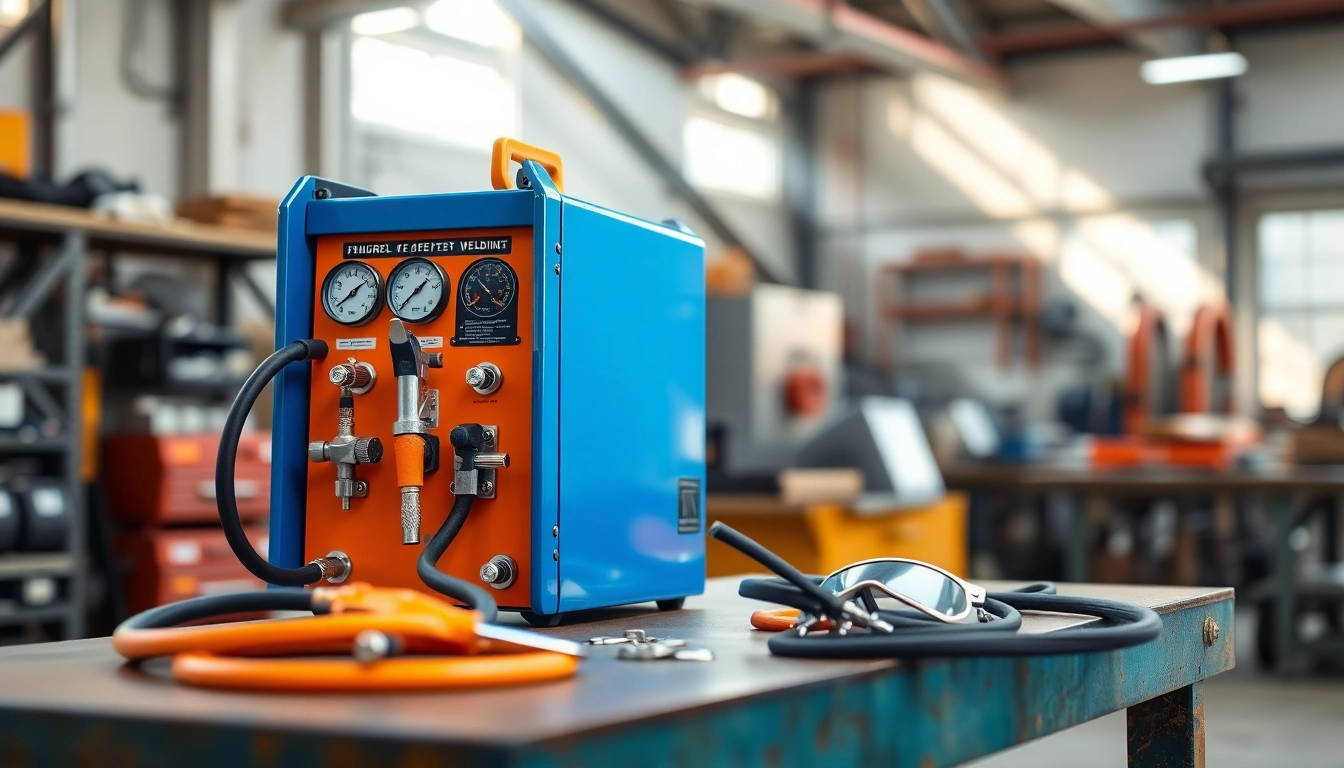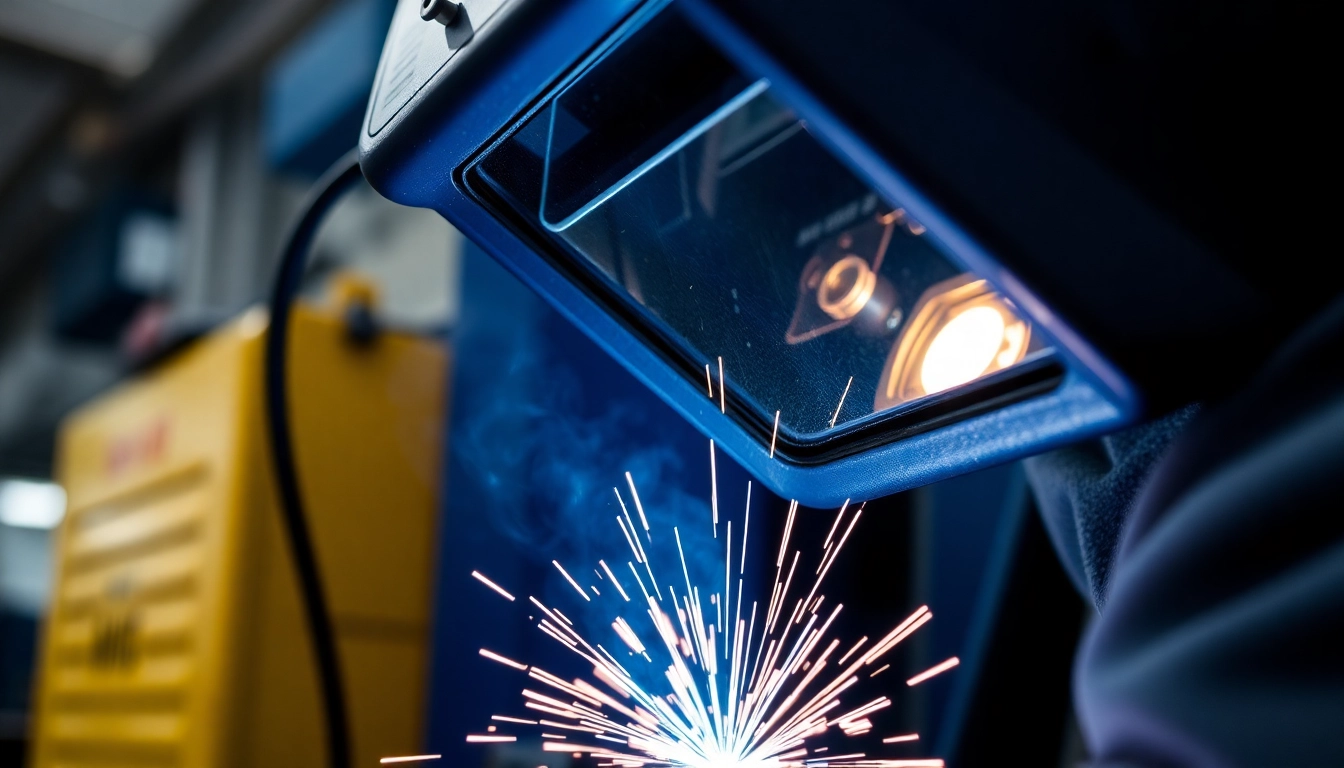Understanding Oxy Acetylene Welding Kits
What is an Oxy Acetylene Welding Kit?
Oxy acetylene welding kits represent a foundational technology in metal fabrication, catering primarily to welding and cutting applications. These kits combine oxygen and acetylene gases, facilitating the generation of a high-temperature flame that is ideal for melting metals. An oxy acetylene welding kit is not just a luxury tool for professionals; it’s also accessible for hobbyists and DIY enthusiasts due to its relatively straightforward operation and affordability.
Key Components of the Kit
A comprehensive oxy acetylene welding kit will typically include several critical components:
- Tanks: There are two primary tanks: one for oxygen and one for acetylene. These are constructed to safely store gases under high pressure.
- Regulators: These devices control the pressure of gases flowing from the tanks, ensuring the operator can manipulate the flame’s heat accurately.
- Hoses: Color-coded hoses (typically green for oxygen and red for acetylene) transport the gases from the tanks to the torch.
- Torch: This critical component mixes the gases and allows for ignition, enabling welding or cutting operations.
- Nozzles: Various nozzle sizes can be switched out to create flames of different sizes and temperatures, tailored for specific applications.
- Welding Goggles: Essential for safety, these goggles protect the eyes from intense light and potential sparks.
Common Uses and Applications
Oxy acetylene welding kits serve a wide range of applications, from heavy industrial tasks to small-scale repairs:
- Metal Cutting: With an oxy acetylene setup, users can effectively cut through thick metals, making it popular in the manufacturing and construction sectors.
- Welding: This technology enables the joining of various metals, including steel, aluminum, brass, and bronze, across various industries.
- Brazing and Soldering: Beyond welding, these kits can join metals at lower temperatures through the process of brazing, which is crucial in plumbing and HVAC applications.
- Heating and Shrinking: The torch can create localized heat for tasks like bending metal or shrinking fitments onto rods.
Benefits of Using Oxy Acetylene Welding Kits
Versatility in Welding Projects
The oxy acetylene welding kit is renowned for its versatility, capable of performing a diversity of tasks with minimal setup changes. This adaptability makes it suitable for both experienced welders and those just starting their crafting journey. Whether you are performing intricate metal art projects or conducting structural repairs, this all-in-one kit caters to varying needs.
Cost-Effectiveness for Beginners
For newcomers to welding, investing in an oxy acetylene welding kit proves to be cost-effective. Compared to some electric welding technologies, oxy acetylene setups are generally less expensive and do not require complex power supply setups. Additionally, once the kit is purchased, operational costs are largely contained within the cost of the gases and routine maintenance.
Suitable for Various Materials
The oxy acetylene welding method is notably adept at working with many materials. Steel, aluminum, copper, and even certain plastics can be efficiently welded using this technique. This wide applicability renders oxy acetylene kits valuable for a myriad of projects, from automotive repair to artistic metalworking.
Choosing the Right Oxy Acetylene Welding Kit
Factors to Consider When Selecting a Kit
When selecting an oxy acetylene welding kit, several key factors warrant consideration:
- Size and Capacity: Assess the size of the tanks—larger tanks can provide longer welding times but may be cumbersome for smaller projects.
- Type of Regulator: Choose a kit with quality regulators that offer precise control; high-quality regulators ensure safer operation.
- Nozzle Sizes: Different projects require different flame sizes; kits with various nozzle options can enhance versatility.
- Safety Features: Look for kits that prioritize safety, including pressure relief valves and quality hoses resistant to wear.
- Portability: If you plan to work on-the-go, ensure that the kit is portable, with manageable tank sizes and a compact design.
Top Brands and Recommendations
Notable brands in the oxy acetylene market include Harris, Victor, and Smith; each known for their durability and reliability. A recommended starting point for beginners is the oxy acetylene welding kit because it combines quality components with a price point suitable for those new to welding.
Budgeting for Your Welding Needs
Budget considerations play a crucial role in selecting an oxy acetylene welding kit. A general entry-level kit can start as low as $100, while fully equipped professional kits can reach several hundred dollars. Additionally, factor in ongoing costs for gases, accessories, protective gear, and potential repair/mechanical costs to maintain operational efficiency.
Best Practices for Using Oxy Acetylene Welding Kits
Safety Precautions to Follow
Safety is paramount when operating an oxy acetylene welding kit. Here are fundamental practices to ensure a safe working environment:
- Use Protective Gear: Always wear welding goggles, gloves, and protective clothing to shield against sparks and harmful rays.
- Ventilation: Ensure adequate ventilation in the workspace to mitigate the inhalation of fumes and gases.
- Check Equipment Before Use: Regularly inspect hoses and fittings for leaks or wear, and secure tanks appropriately to prevent tipping.
- Store Properly: Securely store tanks upright and away from flammable materials to mitigate risks.
Maintenance Tips for Longevity
Proper maintenance extends the life of your oxy acetylene welding kit and ensures safe operation:
- Inspect Regularly: Routinely check all components for wear and tear, particularly hoses and regulators.
- Clean Connections: Keep connections free from debris to ensure a secure fit and proper gas flow.
- Secure Storage: When not in use, store the kit in a safe, dark, and dry location to protect it from environmental damage.
- Change O-Rings: Replace O-rings as needed to prevent gas leaks, a common but critical maintenance point.
Common Techniques and Techniques
For effective and efficient operation, certain techniques should be mastered:
- Flame Adjustment: Learn to properly adjust the flame for different tasks, ensuring it’s neither too oxidizing nor too carburizing.
- Welding Positioning: Maintain the torch at a consistent angle relative to the workpiece for even welding.
- Puddle Control: Monitor the molten weld pool carefully to achieve the desired strength and aesthetic appearance.
- Speed Control: Practice moving the torch at a consistent speed to avoid damaging the metal through overheating.
FAQs About Oxy Acetylene Welding Kits
Is Oxy Acetylene Welding Suitable for Beginners?
Yes, oxy acetylene welding is a fantastic entry point for beginners. The technology offers clear flame adjustments and straightforward equipment setup, making it user-friendly for those new to welding. Many community colleges and fabrication shops offer introductory classes, which provide hands-on experience.
How to Set Up the Kit Properly?
The setup process begins with securely attaching the regulators to the tanks, ensuring each is seated properly to prevent leaks. Once the hoses are connected to the regulators and the torch, open the gas valves on the respective tanks and adjust the regulators to the desired pressure levels. Always check for leaks with soapy water before igniting the torch. Practicing with a small flame until confident is also advisable.
What to Do in Case of Emergencies?
In the event of a fire or gas leak, immediately turn off the gas supply at the tanks, secure the work area, and evacuate to a safe distance. Use a fire extinguisher designed for flammable gases and do not attempt to move the equipment unless trained to do so. Contact emergency services when necessary.



